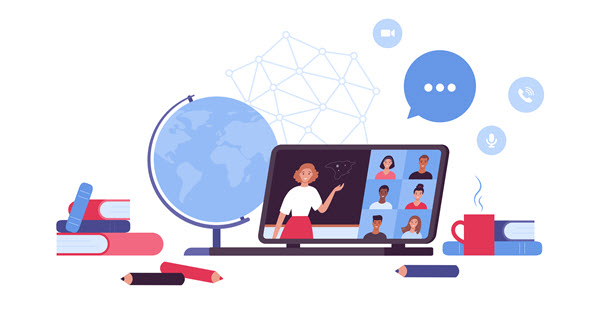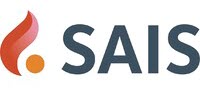5 Important Questions to Ask When Evaluating Online Schools or Courses
After the events of the past couple of years and the experiences that almost every student has had as a result, many people have developed strong opinions about “learning online.” Some have discovered there are wonderful and unique opportunities that they had not ever really considered for students and for families. Some have even decided that it’s ultimately a better long-term solution for their family. Others had frustrating, negative experiences with their emergency remote instruction and decided it’s definitely not right for them. What we know after more than 10 years of developing and delivering online courses, is that what most students experienced (good or bad) during the shutdowns and emergency remote learning that resulted, has almost nothing in common with what well-designed, backed by research, online courses should be.
There are many kinds of online learning choices, so knowing the right questions to ask to evaluate and compare will help you feel more confident about what you may be saying yes or no to when finding the best academic online resources. It’s important to explore and consider the differences before deciding whether learning online is “good” or “bad.” While we never advocate that it is the best solution for all, we do encourage students, families, and schools to better understand their rights and options where online courses are concerned to see if it may be a good supplement or even a comprehensive solution for learning options.
Let’s explore 5 important questions to ask if you are considering incorporating online courses into your student’s academic plan.
1) How can I evaluate the quality of the program I’m interested in?
Having a flashy website or throwing out some buzzwords doesn’t mean that the program will be an online educational experience that is complete or academically sound. There are many recent programs popping up, and it can be tempting to be caught up in the frenzy and go with whatever online presence has the best visual appeal. However, since the Oaks Online program that has been around for over 10 years, we’ve learned there are some things that take time to develop and deliver well online.
- How old is the program and how many students do they have? Ask how long the program has been around, how many students they serve, and whether the program is attached to a physical school or is 100% virtual only. Having a physical campus means that there are more resources and accreditation options that a virtual only program won’t have. Finding out about growth, class size, and overall student population will help to know how robust the community is and how much individual attention your student will likely receive.
- Is the program or courses accredited? There are many levels of approval and accreditation at the state and federal level including NCAA (National Collegiate Athletic Association), WASC (Western Association of Schools and Colleges), and SAIS (Southern Association of Independent Schools) that are important indicators of whether a program has spent the time and effort to ensure their courses and program policies provide students with everything they need after high school into college and beyond. Finally, look at the course catalog and make sure that there is a significant variety of course offerings including honors and AP if you are looking for college prep.
- A great question to ask is where the courses came from. Were they created in-house or bought from another provider? Writing high quality, college-prep, academically challenging online courses that have interactive instruction and are designed for online delivery take a tremendous amount of time and resources that many schools and online programs don’t have, so the courses are purchased from an outside provider. This means that the curriculum is not intentionally designed to meet the school’s mission, vision, and goals, but instead is a generic course intended to meet basic, minimal content standards. This also means the exact same course will be offered many other places impacting the academic integrity of the material.
2) How is the program structured?
There are many program elements that can vary from program to program that can have an impact on the effectiveness of the program, whether a student feels like the program is a good fit, and if they are part of a supportive, welcoming, learning community.
- How much does it cost? Price is one of the first and biggest questions people ask, but cheaper isn’t always better, and truthfully, the most expensive isn’t always automatically mean it’s the best choice either. Once you know the price of individual enrollments and full-time, diploma seeking tuition, dig a bit deeper to find out what is included in the cost and whether there may be discounts or scholarship options available. Don’t dismiss it because of sticker shock. There are often payment plans and other opportunities to reduce the overall cost.
- What is the primary method of instruction or content delivery? Creating well-written courses for students to work through independently and asynchronously is very time consuming to create and can mean the cost may be higher even if the amount of live instruction may be less than you realize. We’ll talk more about questions to ask about how courses are written later, but this makes a significant difference to the overall learning experience! How much of the learning is completed independently vs delivered by an instructor during a live class is important to know up front to help with setting realistic expectations and planning for coursework. Having a significant amount of live instructor time when learning online can be very draining for students, difficult to schedule around, and can have a negative effect on retention and understanding. There is great benefit to students being able to work at the time and location that works for their learning style and schedule.
- Is there an opportunity for students to build community with classmates through student life events, online collaboration, or live class time? One of the most important benefits of a well-designed, high-quality online learning program is that it supplies students who are already plugged into their local community the opportunity to have space in their schedule to become or continue to be deeply involved. For students that may be struggling to connect locally or are more remote and looking for other ways to become plugged in, being part of a robust online learning community affords students the chance to get to know and work with students from all over the world! This can truly be the best of both worlds!
- Flexibility is one of the words that many programs claim as a benefit of online learning, but what does flexibility mean for online learning? This is an important point to clarify sooner rather than later. Does it mean students can start or stop a course at any time during the year? That they can work through it as fast or as slowly as they want? Does it mean there are no requirements around attendance or assignment submissions? This is a critical part of the learning experience and can greatly impact content understanding and online learning success. At Oaks Christian Online, we know that a best practice for students in K-12 is to have boundaries and guardrails so that there is limited flexibility around when and where they can complete coursework, while still setting proper expectations around due dates and course completion.
3) What does the interaction between students and teachers look like?
It’s commonly known that a key factor in academic success is closely related to effectiveness, care, and interaction with a teacher. This is true in traditional, brick and mortar classrooms, as well as online courses. Be careful to ask specific questions related to teacher availability and interaction with students. The less a course costs, often the less meaningful instruction, support, and interaction they have with their teacher and is often an area that can be easily miscommunicated or misunderstood so don’t forget to cover this important part of the conversation.
- How much regular contact do students have with teachers? Even if a course is well designed for online learning, having regular access to a teacher to ask questions and receiving instructional support and encouragement is still important. In addition to the importance of some live class instruction to supplement and enhance the course content, having the ability to visit an office hour, schedule a time to connect with the teacher, or exchange emails, messages, or chats can help students feel connected and supported even if they aren’t in a face-to-face classroom with their teacher. Also, confirm that the primary point of contact will be the primary instructor, not an aide, assistant, or another school staff member.
- What type of feedback is received and what is the expected turnaround time? In an environment where interaction is virtual, supplying prompt and meaningful feedback is even more important to a student’s academic success. If they are working through content and are unsure how they’re doing, where they can improve, or if anyone is even looking at their work, it can have a profoundly negative impact on progress, motivation, and overall academic achievement. Assignments should be graded quickly enough that students can use the correction to improve future assignments and feedback should be varied and useful for students. In addition to just grades, ask what other types of feedback students receive and who is providing that feedback. Teachers can use rubrics, written responses and annotation, video feedback, individual meetings with students, and classroom review to ensure students have actionable information on the work they are completing.
4) How were the programs courses created?
There are many ways to create, design, and deliver a course online, and understanding some of these differences can help make sure you know what to look for, what you are paying for, and what the experience will be like for your student as they work through the courses. There are research backed best practices around instructional and visual design for online courses that make them more engaging, effective, and enjoyable.
- How was the course designed and were online instructional best practices used? Was it adapted from a traditional classroom to be delivered remotely or intentionally built to be delivered and taken online? Who wrote it, an outside source or someone in the school you are looking at? It doesn’t take a lot of effort to put the course text online and turn a camera on the teacher during the teaching; however, that is not effective or engaging online learning and can result in extreme fatigue for students and teachers who are struggling to focus and deal with content in multiple places. Incorporating interactive online elements and practice and providing different methods of delivering content that include text, audio, images, and video intentionally used where they are most effective, can transform a boring page turner into a compelling online learning journey. Request to look at a sample course to evaluate the amount of effort that has been put into making the course interesting and accessible for students.
- How are visual and instructional design elements included to ensure an interactive experience for learners that supports success? Most people don’t realize there are proven design standards for online courses that can really affect how enjoyable and effective a course will be. The visual design can add to the instructional effectiveness, but it can also change how students navigate through the course and get to the material which can make the difference between a student having a positive experience or being frustrated and discouraged with their online course.
- What level of rigor is incorporated in the course design? Online courses and curriculum, just like traditional classrooms, come in all levels of depth and difficulty. Just because a student has an “A” doesn’t mean that the course is adequately preparing them for subsequent High School or College courses. Look for accreditation, variety of course offerings, designation of College Prep, Honors, and Advanced Placement to help decide if the level of rigor is right for your student(s) and your goals.
5) How are technology requirements communicated and supported?
This is a topic that many people make assumptions about and don’t realize when they pay for an online course that there are key questions to ask to be sure the student is prepared for learning online. When tech challenges come up (and they will!), making certain that you have the most appropriate technology to access the course. Being proactive about backup plans, and being aware of who to contact for support ahead of time, can make these problems manageable instead of feeling insurmountable. Thinking ahead where tech troubleshooting and skills are concerned will save you time and emotional energy later.
- Is the course intended for desktop, laptop or mobile devices? Depending on how the course material is stored, accessed, and delivered and the level of interactive elements, can mean that students really need a desktop or laptop to have the best overall experience. In a world where we do so much on our smartphones, making sure we check on what tech devices are needed to participate fully in the course will be helpful as you prepare and get started.
- Are the requirements and setup steps clearly communicated and easy to understand? There are several steps involved with getting started in an online course. Purchasing materials, getting access to the course content, knowing where to communicate with the teacher, and how to get support if there are login or materials issues are just a few. Ask if there are clear guidelines and resources to support students and families as they work through this process. Find out how this information is sent and where all it can be found to so that you can bookmark, print out, or save these key details.
- What are the support options if students encounter issues with access or personal technology? Support options and timing can vary widely and can include anything from submitting requests online, to live support. These support options can include help with tech, school systems, academic needs, and much more. The support options should be clearly found and accessible so that students and families can quickly get the help that is available to them. Most schools will not be able to help with specific tech issues related to individual equipment, so knowing what support options are available to you for general tech trouble with your computer or devices is also a good thing to know ahead of time.
While it can feel overwhelming at first evaluating options for your student(s), just start by having a conversation or asking questions; this will be an important part of the process in understanding whether the online school or course you are looking at will be the best fit for your personal and academic success. We invite you to reach out to us if you have questions or would just like to learn more about online learning opportunities available.









